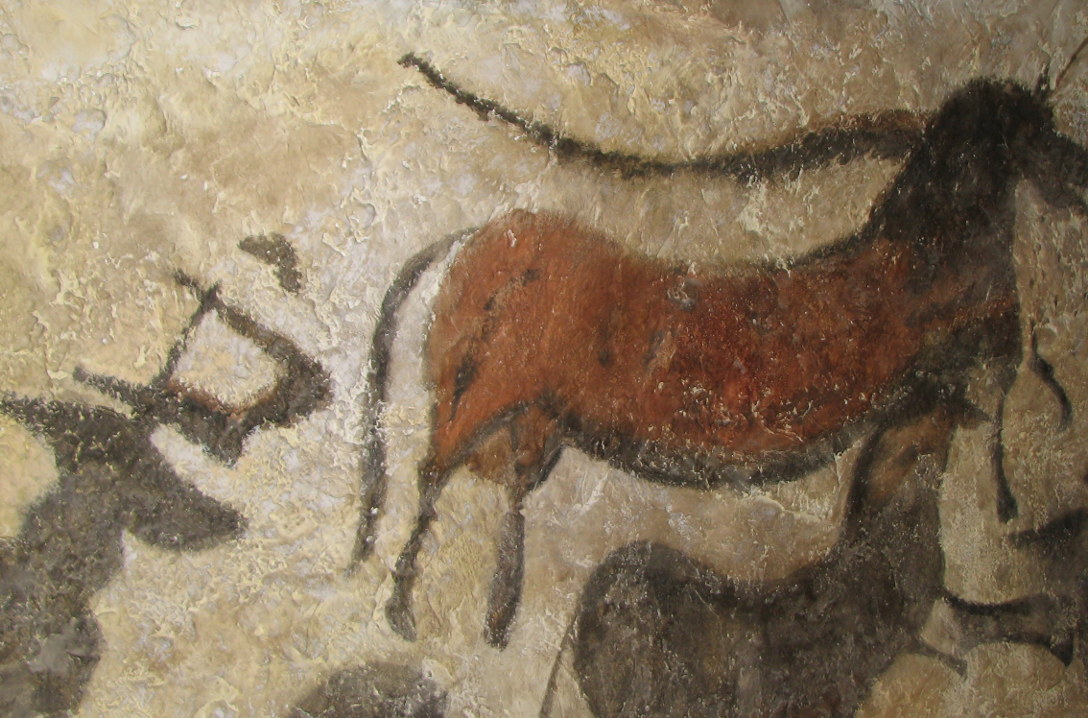|
Page Summary
The art that has surfaced from the prehistoric period provides insights into the early worlds of humanity. It is important to understand where this art comes from but also who makes it and why it was made in the first place.
Art is an essential tool to understand origin of culture and the reasons for its continuation. There are many pieces of art that reflect this period whether they be cave paintings, hand stencils, sculptures or architecture.
The AP Art History exam focuses on the time period 30,000 to 500 BCE.
The Paleolithic period (old stone age) lasted from approximately 40,000 BCE to 10,000BCE and is notable for containing some of the first examples of artwork. This artwork consists of cave paintings or sculptures.
The Mesolithic period (middle stone age) took place 10,000 BCE to 8,000 BCE.
The period from 8,000 BCE to 2,500 BCE, is known as the Neolithic period (new stone age) and is particularly notable for the social organization that occurred. Examples of this artwork include the Stonehenge and a site located in Skara Brae, Scotland.
The Bronze age took place from 3,300 BCE to 1200 BCE. At this point people began to make tools weapons, and other implements.
The Iron age took place from 1,200 BCE To 500 BCE and then we begin to move into the Early Medieval Period.
It is important to remember that not all art was focused in Europe and that prehistoric art can be found throughout the world.
*Many opinions differ about the time frames of these periods*
Elisabeth Burns (February 2020); Edited Gianna Bruzzese (2024)
|
Stone Slab from the Apollo 11 Cave, Namibia

 Link: Origins of Modern Humans in Africa
Link: Origins of Modern Humans in Africa
 Learning Resources
Learning Resources
Prehistoric Art Lesson on Differences between Paleolithic, Mesolithic, and Neolithic Art
- Module to help decipher the difference between Paleolithic, Mesolithic, and Neolithic art.
Understanding the Stone Age:
- Video describing the difference between Paleolithic, Mesolithic, and Neolithic Periods
Global Prehistory
Prehistory is the term for human history before the invention of writing systems and spans a huge period of approximately 10 million years.
The first topic in Art History begins with the First Art of Humanity.
While the presence of Prehistoric art has dwindled on the AP exam in recent years, the lessons learned from these objects are invaluable to the students in the overall understanding of art in all cultures.
Throughout the investigation of these objects, consider the following question:
Why do people make art? It seems like a simple question but students can usually identify or synthesize multiple reasons for each object that we study.
Archaeologists Have Uncovered Cave Art That’s Way Older Than Any on Record—and It Was Made by Children (2021)
- Found near the Quesang village in the Tibetan Plateau and are between 169,000 and 226,000 years old.
Paleolithic Art (~40,000 BCE - 10,000 BCE)
Art was marked by early humans working with primitive paint and stone. A lot of the subject matter of cave paintings during this time consists of depictions of animals. Human figures
are more often seen in sculpted form during this time.
Red Dot Becomes Oldest Cave Art
- One motif, a faint red dot, is more than 40,000 years old at El Castillo in Spain
Painting and Cave Art
Some of the richest artistic material from the time before written records comes from cave paintings. The three most famous prehistoric caves are Lascaux and Chauvet in France and Altamira in Spain.
Lascaux Caves

 Take a virtual tour of the Lascaux caves and see the different paintings on the walls and ceilings.
Take a virtual tour of the Lascaux caves and see the different paintings on the walls and ceilings.
Lascaux (15000 BC) from Heilbrunn Timeline of Art History, Metropolitan Museum of Art.
The Cave Drawings of the Lascaux Cave
Click here for background information on Chauvet.
Rock Art in North Africa has information on cave art in North Africa.
Hand Stencils
 One of the most common forms of painting were hand stencils. These basic prints may seem like just graffiti but they can tell a lot about the people that produced them.
One of the most common forms of painting were hand stencils. These basic prints may seem like just graffiti but they can tell a lot about the people that produced them.
- This video demonstrates how hand stencils were created. Your students can do this, too.
Who were the artists of these paintings?
- One of the oldest examples of painting is 25,000 years old and comes from a stone tablet found in Namibia, called the Apollo 11 Stones.
Sculpture
Paleolithic people began sculpting around this time, as well. It's important to note that these works of art are all Subtractive Sculptures, a key term that means they were carved or cut from a larger piece of stone.
Click Here to learn more about Subtractive Sculptures in comparison to other techniques.
One of the most popular iconographies are the "Venus Figures", sculptures of nude women. The functions of these artifacts are contended but frequently discussed.
Venus of Willendorf around c. 25,000 BCE
The Venus of Willendorf is a sculpture "in the round", a key term meaning that it is completely free from the material it was made from; it can be touched on all sides and can be transported away from where it was created/found. Other examples of sculptures that are "in the round" can be found here.
The Venus of Laussel is another Venus though she is "relief", a key word meaning that the raised, sculpted elements remain attached to a solid background of the same material. Click here to see the detail given to this piece of art.
This timeline reveals the creation of the Venus of Willendorf in comparison to other inventions.

Mesolithic Art (~10,000 - 8,000 BCE)
Mesolithic art focuses on cave paintings, engravings, and ceramics to reflect their daily lives. Subject matter began to shift to images of groups of people hunting, gathering or interacting with one another.
Check out this link to understand what makes Mesolithic art so special!
The MET's Interactive Timeline for Prehistoric Art!
- Explore different time periods and geographical locations. 8,000BCE To Present.
Man of Bicorp (Cuevas de la Araña) c. 8,000 BCE
This image is painted rock art of a man harvesting honey, It was found near Valencia, Spain.

Neolithic Art (~8,000 BCE - 2,500 BCE)
The Neolithic Period is marked by social organization and the formation of the first communities. Because of these cultural shifts, we begin to see the first large-scale art, including architecture. The architecture during this time mostly consisted of tombs and temples.

Architecture
The most famous Neolithic artwork is Stonehenge, located in southern England built between 3000 and 2000 BCE
It's well known for its mysterious purpose and its impressive construction.
While many people have theories, the skill and intellect of these prehistoric monument builders is undeniable.
Modern scientists have calculated that the positions of the stones are aligned with seasonal landmarks and special occasions.
What do students believe this may have been used for?
In contrast, a lesser known example of Neolithic artwork is located in Skara Brae, Scotland.
Here, the structure is made out of stone including stone furniture. This implies the usage of the site as a method of communal gathering.
Manhattanhenge, a sunrise phenomenon when the sun aligns with the Manhattan grid. It occurs only four days each year. This is a modern take on the

idea of incorporating the landscape with the architecture.
These prehistoric people are believed to have been some of the first ever farmers in Britain.
The following is a map of Europe that follows the movement of early neolithic people.

Art Around the World

Art did not stop in the Paleolithic period and was not limited to only European countries.
Many different pieces of art have been found throughout the world.
Dog from Harappa, 2600–1900 B.C.E.

This terracotta figurine is of a dog found at the Indus civilization, from Harapa (Pakistan).
Learn more about Indus Valley figurines here!
Neolithic Chinese Painted Pottery
Click here to find out more about Neolithic art from China. Click here to see population changes throughout this period.
Rock Art in Africa
Comments (0)
You don't have permission to comment on this page.